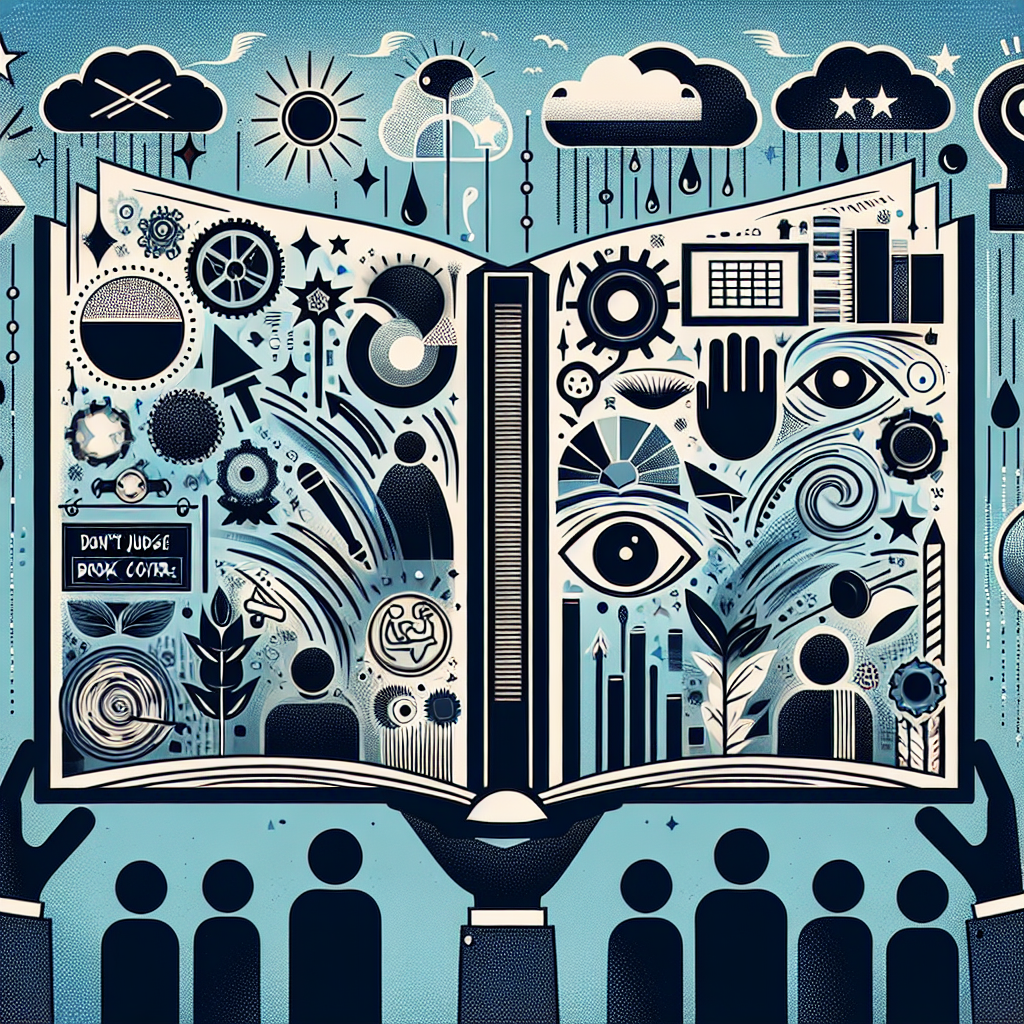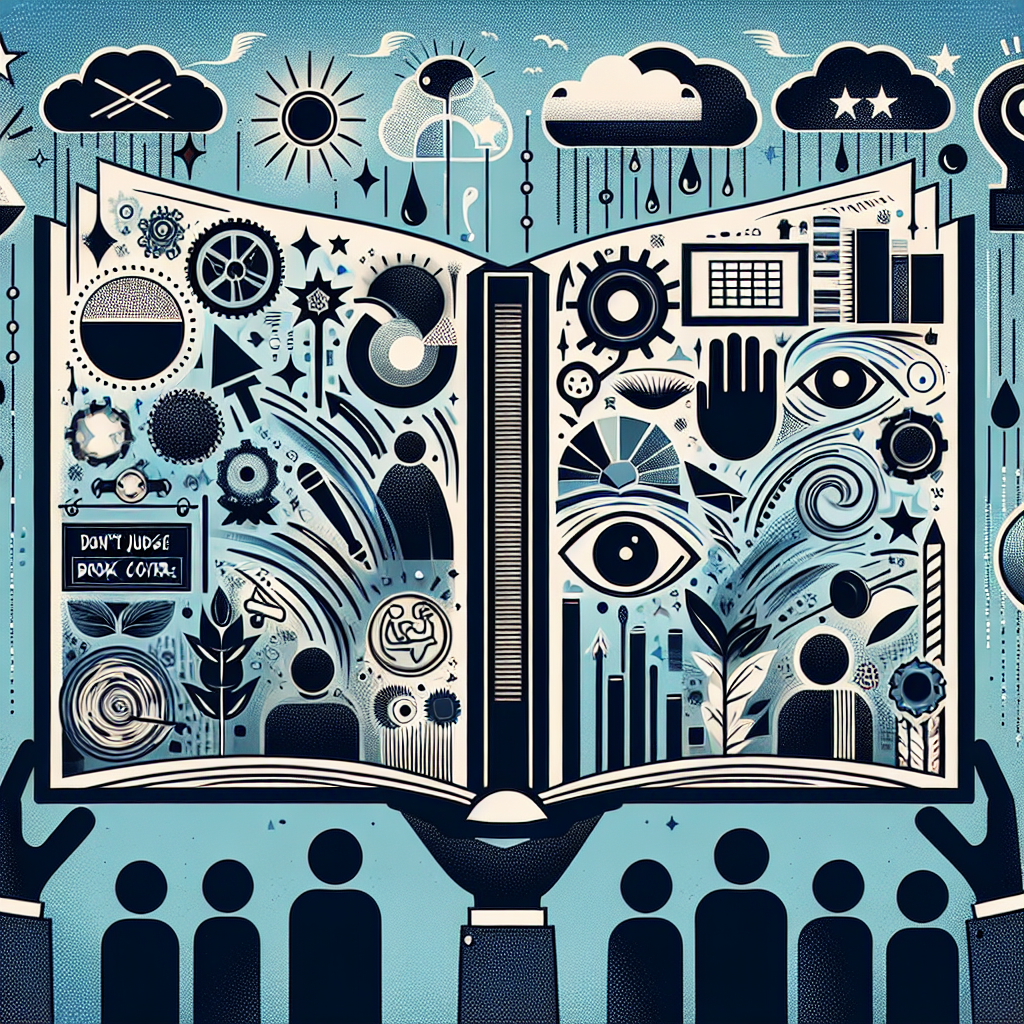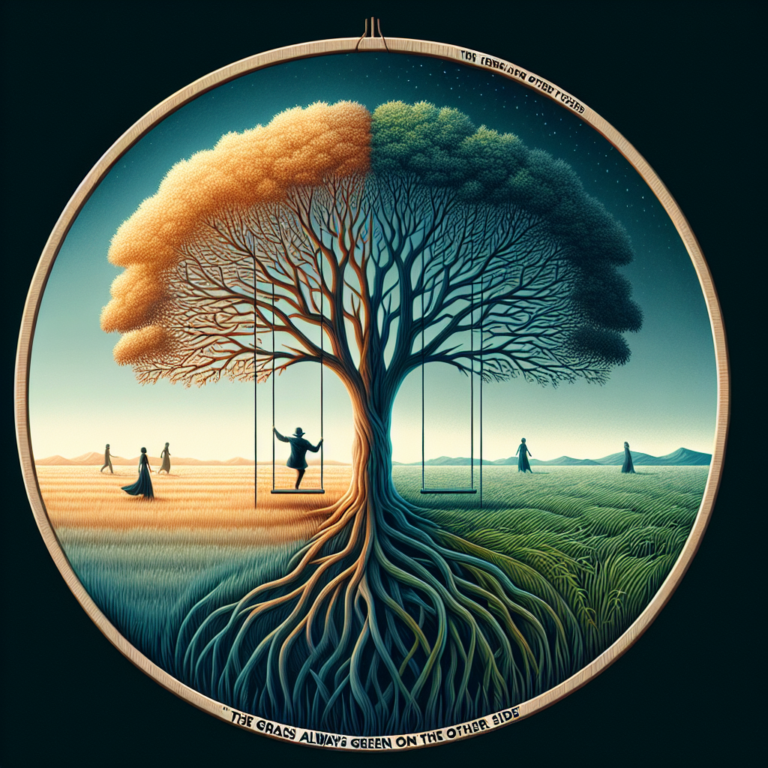What Are The Implications Of “Don’t Judge A Book By Its Cover” In Society?
Imagine a world where judgments about individuals were not based solely on their outward appearances. Riddled with misconceptions and assumptions, our society often fails to truly understand the depth and complexity that lies beneath the surface. But what if we could adopt the mantra of “Don’t Judge a Book by Its Cover” and embrace a more inclusive and accepting mindset? This article explores the profound implications of this age-old saying in our society, revealing the potential for compassion, empathy, and growth that lies within each of us. So, grab a cup of tea, sit back, and delve into the fascinating world of understanding and acceptance. You’re about to embark on a transformative journey.
Understanding the Idiom
Origin and Meaning of the Phrase
The idiom “Don’t judge a book by its cover” is a well-known saying that cautions against forming opinions or making judgments about someone or something based solely on their outward appearance. The origin of this phrase is uncertain, but it has been used for centuries to emphasize the importance of looking beyond surface-level impressions.
The metaphorical meaning of this idiom is that the true worth or value of a person or object cannot be determined solely by their external appearance. It encourages individuals to delve deeper, beyond initial appearances, and consider the person’s character, qualities, or potential before making any judgments.
Interpreting the Idiom in Relation to Society
In the context of society, this idiom speaks to the prevalent issue of stereotyping and the detrimental effects it has on individuals and communities. Society often falls prey to the trap of making quick judgments based on appearance, without taking the time to truly understand a person’s background, experiences, or capabilities. By heeding the message of this idiom, we can challenge these damaging stereotypes and foster a more inclusive and empathetic society.
Deep Dive into Stereotyping
Defining Stereotypes
Stereotypes can be defined as widely held beliefs or assumptions about a particular group of people or things. These beliefs often oversimplify complex and diverse characteristics, leading to generalizations that may not be accurate or fair. Stereotypes can be based on various factors such as race, gender, age, religion, or nationality.
How Stereotyping Leads to Judging
Stereotyping often leads to judging as it prompts individuals to make assumptions and draw conclusions based on limited information. When someone falls into the trap of stereotyping, they tend to ignore individual differences and treat everyone from a particular group as if they possess the same characteristics or behaviors. This can result in unfair judgment and biased decision-making.
Examples of Stereotypes in Society
Stereotypes permeate many aspects of society, influencing interactions, perceptions, and opportunities. Some common examples include assuming that all Asian Americans are good at math, that women are less competent in leadership roles, that young people are lazy and entitled, or that individuals from a certain religion are extremists. These stereotypes not only perpetuate ignorance but also hinder progress in creating a more inclusive and respectful society.
Impacts on Individuals
Psychological Effects of Being Judged
Being judged based on appearance or stereotypes can have profound psychological effects on individuals. It can lead to feelings of low self-esteem, anxiety, and social isolation. Constantly being subjected to unfair and judgmental treatment can erode one’s confidence and sense of self-worth, creating lasting emotional scars.
False Impressions and Unfair Treatment
When people judge others solely based on their appearance or stereotypes, they create false impressions and perpetuate unfair treatment. This can lead to missed opportunities, discrimination, and a lack of understanding among individuals. It deprives individuals of the chance to showcase their true abilities, talents, or perspectives, resulting in a society that is poorer for not recognizing the unique contributions of every individual.
Loss of Personal Identity and Authenticity
When individuals are constantly judged based on stereotypes, there is a risk of losing their personal identity and authenticity. They may feel pressured to conform to societal expectations or suppress aspects of their personality to avoid judgment or discrimination. This loss of individuality not only hampers personal growth but also stifles the richness of diversity within society.

Social Consequences
Divisions and Prejudice
Stereotyping and judging based on appearances fuel divisions and prejudice within society. When individuals are categorized and treated unfairly based on their outward appearance, it creates an “us vs. them” mentality and perpetuates a cycle of discrimination. These divisions hinder social cohesion and create barriers to understanding and empathy among different social groups.
Discrimination in Various Contexts
The impact of judging based on appearances extends to various contexts, such as education, employment, housing, and access to services. For example, in education, students may be underestimated or denied opportunities for advancement due to stereotypes. In the workplace, individuals may face bias during the hiring process or miss out on promotions due to preconceived notions. Such discrimination denies individuals equal rights and perpetuates societal inequities.
Contribution to Social Inequality
By judging based on appearances and perpetuating stereotypes, society contributes to social inequality. Groups that are consistently stereotyped and judged unfairly face systemic barriers and limited opportunities. This perpetuates a cycle of disadvantage, where marginalized groups struggle to overcome societal biases and achieve equal footing. Overcoming these challenges requires a collective effort to challenge stereotypes, dismantle systemic barriers, and promote inclusivity.
Challenging Perceptions
Promoting Empathy and Understanding
Challenging the habit of judging based on appearances entails promoting empathy and understanding within society. It involves encouraging individuals to adopt a mindset that seeks to understand others, embracing the diversity of experiences and perspectives that each individual brings. By fostering empathy, we can move beyond stereotypes and connect with others on a deeper level.
Embracing Diversity and Difference
To counteract judging based on appearances, society needs to embrace diversity and embrace the value of difference. Recognizing that every person has their own unique story and background can help dismantle stereotypes and open doors to greater acceptance and inclusion. By celebrating diversity, we can foster inclusive communities that appreciate and respect the richness and complexity of every individual.
Encouraging Open-Mindedness
An essential step in challenging perceptions and reducing judgment based on appearances is cultivating open-mindedness. Encouraging critical thinking, questioning assumptions, and promoting dialogue can help individuals break free from the constraints of stereotypes. By approaching others with an open mind, we create opportunities for personal growth, learning, and the dismantling of prejudiced beliefs.
Educational Implications
Role of Schools in Combating Judgments
Schools play a vital role in combating judgments based on appearances by fostering inclusive and tolerant environments. It is essential for educators to cultivate a culture that promotes respect, empathy, and understanding among students. By teaching the harmful effects of stereotyping and promoting open-mindedness, schools can equip students with the tools necessary to challenge and overcome societal biases.
Teaching Tolerance and Acceptance
Incorporating lessons on tolerance and acceptance into the curriculum can help students recognize and challenge their own biases. By exposing students to diverse perspectives, promoting cultural understanding, and teaching the importance of empathy, schools can empower students to become agents of change and work towards a more inclusive society.
Creating Safe and Inclusive Learning Environments
Creating safe and inclusive learning environments is crucial for combating judgments based on appearances. Schools must ensure that students feel valued and respected, regardless of their backgrounds. Implementing anti-bullying policies, fostering positive relationships, and providing resources for addressing discrimination all contribute to creating an environment where diversity is celebrated, and students can thrive.
Media and Entertainment Industry
Influence of Media in Reinforcing Stereotypes
The media and entertainment industry play a significant role in reinforcing stereotypes through portrayals in movies, TV shows, and advertisements. Media often perpetuates harmful stereotypes, relying on tropes and clichés that reinforce biases and create false narratives. These portrayals shape societal perceptions and contribute to the continuation of judging based solely on appearances.
Representation and Misrepresentation
One of the key issues within the media industry is the underrepresentation or misrepresentation of certain social groups. When certain groups are consistently portrayed in stereotypical roles or ignored altogether, it reinforces harmful biases and hampers societal progress. By promoting accurate and diverse representations, the media industry can challenge existing stereotypes and promote a more inclusive society.
Responsibility of the Entertainment Industry
Recognizing the influence they hold, the entertainment industry has a responsibility to combat judgments based on appearances. By prioritizing diversity in casting, storyline development, and overall representation, the industry can empower marginalized communities and challenge societal norms. It is crucial for media organizations to take deliberate steps to address biases and ensure their content reflects the diverse realities of society.
Legal and Justice System
Unfair Judgments and Biases
Unfair judgments and biases within the legal and justice system have severe implications. Racial profiling, implicit biases, and discriminatory practices can lead to unjust outcomes and perpetuate systemic injustices. The presumption of innocence and the principle of equality before the law should guide the legal system, emphasizing the need to recognize and address prejudices rooted in judging based on appearances.
Impact on Minorities and Marginalized Groups
Minorities and marginalized groups often bear the brunt of biased judgments within the legal and justice system. Racial and ethnic minorities, individuals from lower socioeconomic backgrounds, or those belonging to specific religious groups may face heightened scrutiny and prejudiced treatment, leading to disproportionate incarceration rates and restricted access to justice. Addressing these biases is essential for a fair and just society.
Efforts to Address Bias in the Legal System
Efforts to address bias in the legal system are necessary to ensure justice is served impartially. Implementing training programs to combat implicit biases, diversifying the legal profession, and promoting community engagement can all contribute to reducing the impact of judgments based on appearances within the legal system. It requires a collective commitment to fairness and an acknowledgment of the role biases play in shaping outcomes.
Implications in the Workplace
Impeding Equal Opportunities
Judging based on appearances has significant implications in the workplace, hindering equal opportunities for all employees. When employers make judgments based on appearances rather than qualifications or experience, it perpetuates systemic inequalities and prevents individuals from realizing their full potential. This can have long-lasting effects on career progression and overall job satisfaction.
Effects on Hiring and Promotions
Judgments based on appearances can negatively impact both the hiring process and promotions within organizations. Unconscious biases may lead to overlooking qualified candidates based on stereotypes or subjective judgments, limiting the diversity and talent pool of employees. It is essential for employers to implement fair and unbiased practices that focus on meritocracy and eliminate opportunities for discrimination.
Promoting Diversity and Inclusion in Organizations
Fostering diversity and inclusion within organizations is crucial for combating judgments based on appearances. By prioritizing diversity in recruitment practices, creating inclusive work environments, and providing equal opportunities for career growth, employers can challenge existing biases and embrace the diverse perspectives and talents that every employee brings. Embracing diversity not only benefits individuals but also enhances overall organizational success.
Reflections on Personal Behavior
Recognizing Our Own Biases
Recognizing our own biases is an essential step toward combating judgments based on appearances. It requires self-reflection and a willingness to critically examine our thoughts, beliefs, and behaviors. By acknowledging that everyone has biases, we can take proactive steps to challenge and counteract them, promoting fairness and understanding.
Challenging Assumptions and Stereotypes
Challenging assumptions and stereotypes is necessary to break free from the habit of judging based on appearances. It involves actively seeking out new information, engaging in conversations with individuals from diverse backgrounds, and questioning preconceived notions. By constantly challenging our assumptions, we open ourselves up to learning and growth, contributing to a more inclusive and accepting society.
Embracing the Essence Over Outward Appearances
Finally, embracing the essence of individuals over their outward appearances is crucial for combating judgments based on appearance. It means recognizing that there is more to a person than what meets the eye and valuing their character, beliefs, and experiences. By focusing on substance rather than superficiality, we can foster deeper connections and promote a society that values the inherent worth of every individual.
In conclusion, the implications of “Don’t judge a book by its cover” in society are far-reaching and profound. Stereotyping and judging based on appearances perpetuate harmful biases, division, and inequality. To address these implications, it is crucial to promote empathy, embrace diversity, and challenge our own biases. From education to the media industry, the workplace to the legal system, efforts must be made to combat judgments based on appearances and create a more inclusive and just society. By recognizing the value of each individual, regardless of their outward appearance, we can strive towards a society that celebrates diversity, fosters understanding, and encourages authentic connections.







